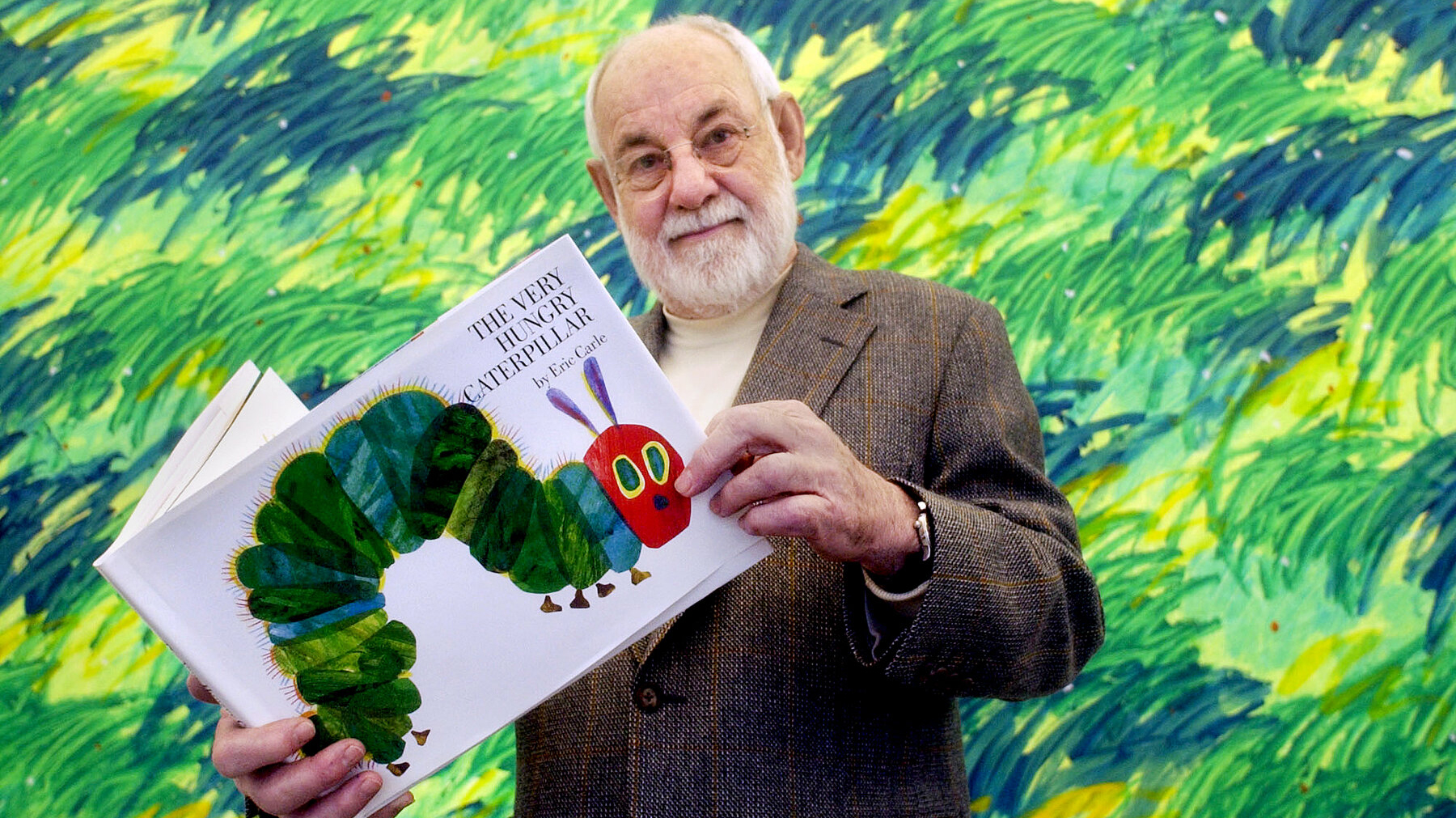Penna Dexter
Of the books around my house meant for grandkids, Eric Carle’s The Very Hungry Caterpillar has been read the most. Often, several times at one sitting. The babies want to poke their little fingers through the nibble holes in the various foods the caterpillar eats. The older ones want to count the fruits, identify the days the caterpillar consumes them, and name the other treats he eats his way through.
Then, children and adults alike gasp at the “beautiful butterfly,” the book’s final illustration, which Washington Post writer, Emily Langer describes as “a panorama spread over two pages,” in which “light seems to shine through the creature’s wings as if through the stained-glass windows of a European cathedral.”
Writer and illustrator, Eric Carle died six months ago. Ms. Langer, who wrote his obituary for the Post, describes “his hallmark collage illustrations, which he created by layering hand-painted tissue paper,” as part of his effort to show children “a world that was filled with beauty, despite the darkness he had intimately known.”
Mr. Carle was the son of German immigrants to the United States. The family returned to Stuttgart in Nazi Germany. He remembers hiding in a cellar during World War II as bombs fell. He told National Public Radio, “During the war, there were no colors…everything was gray and brown.” But an art teacher secretly introduced him to Pablo Picasso and Henri Matisse and other modern painters disdained by the Nazis.
After a New York advertising career that began in 1952, Eric Carle, in 1967, illustrated Brown Bear, Brown Bear, What Do You See? and found his calling. “The child inside me…” he said, “…was beginning to become joyfully back to life.”
Mr. Carle wrote The Very Hungry Caterpillar in 1969. Ms. Langer’s piece points to the “caterpillar’s eating frenzy” as a reaction to wartime deprivation and suggests the story may be Christian allegory,” a “message of hope.”
It’s no wonder we’re still reading it.
 Listen Online
Listen Online Watch Online
Watch Online Find a Station in Your Area
Find a Station in Your Area










 Listen Now
Listen Now Watch Online
Watch Online
